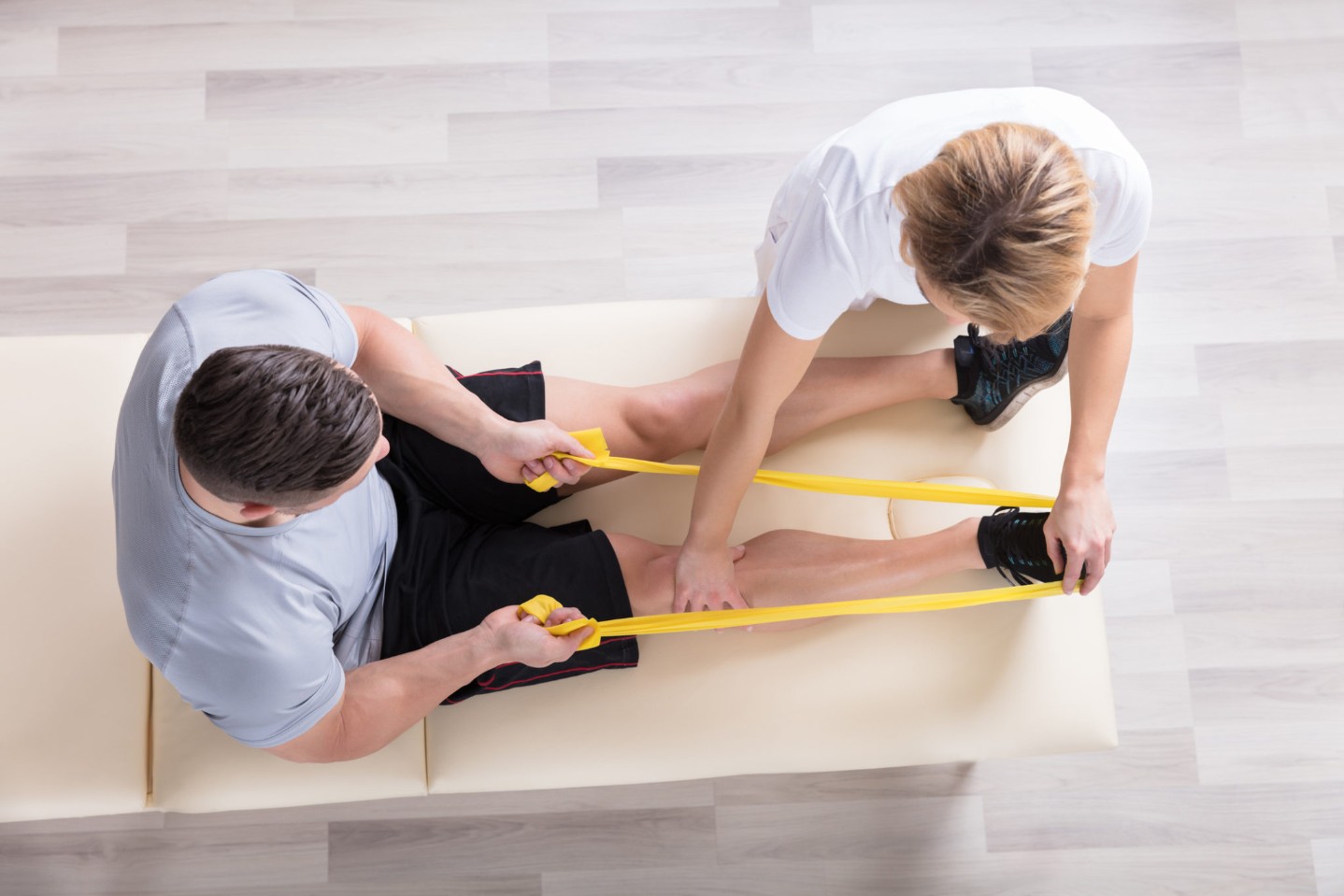More Than Just a Little Gland: Shining a Light on Thyroid Awareness Month
DEC 29, 2026Tucked away at the base of your neck, this butterfly-shaped gland produces hormones that regulate almost every process in your body.
Read More
It’s natural to want to fix what’s broken – especially when pain is involved. That’s why many people who suffer pain related to herniated discs or other issues sometimes seek MRI or CT scans. They want to “look under the hood” and see what needs repaired.
The good news is not everyone needs imaging or even surgery. In some cases - especially for chronic pain not tied to a specific injury – patients can be helped with conservative treatment by a qualified physical therapist and without the need for imaging.
Physical therapists are specially trained to identify the cause of pain and provide the proper corrective exercise regimen for decreasing pain and preventing symptoms from returning in the future. This is done by identifying your weakness/restrictions and providing proper strengthening exercises or stretches to alleviate symptoms.
It’s important to know that the aging process inevitably causes anatomical changes -- or normal “wear and tear” which can show up on CT scans and MRIs. Multiple studies have found that some issues discovered on imaging scans assumed to be pain provoking are actually part of our natural aging process and may not be painful at all.
In fact, simply having a disc herniation or a rotator cuff tear does not necessary mean that it hurts. A 2014 study1 found that 30% of 20 year olds, 60% of 50 year olds and 84% of 80 year olds have bulging discs but are asymptomatic -- meaning they have disc bulges but no pain or dysfunction. This study also found that disc degeneration is completely normal as many of the patients who have these indicators on an MRI are also pain free.
Why this matters? An MRI for knee pain might show a small tear in the cartilage known as the meniscus. But what if, after surgery to repair that tear, the pain continues? This can happen when pain is actually coming from a different issue – perhaps from a condition called “runner’s knee” – but is pinned on an otherwise benign tear because it shows up on the MRI.
A 2013 study2 displayed similar results with regard to rotator cuff tears. The most intriguing aspect of this study was the fact that painful rotator cuff tears only accounted for 34.7% of all tears, while non-painful tears were present in 65.3% of cases. This study again demonstrates that finding a tear on imaging does not necessary mean it is the cause of the pain.
There are times when obtaining an MRI or CT scan is essential to see the extent of an injury – and surgery may be absolutely necessary. When possible, it’s reasonable to consider a more conservative course of physical therapy before undergoing costly imaging.
Schedule an appointment with one of our CHI Health Physical Therapists today.
1Brinjikji W, Luetmer PH, Comstock B, Bresnahan BW, Chen LE, Deyo RA, Halabi S, Turner JA, Avins AL, James K, Wald JT, Kallmes DF, Jarvik JG. Systematic literature review of imaging features of spinal degeneration in asymptomatic populations. AJNR Am J Neuroradiol. (2015) Apr;36(4):811-6.
2Hiroshi Minagawa,a Nobuyuki Yamamoto,b Hidekazu Abe,c Masashi Fukuda,d Nobutoshi Seki,c Kazuma Kikuchi,c Hiroaki Kijima,c and Eiji Itoib,* Prevalence of symptomatic and asymptomatic rotator cuff tears in the general population: From mass-screening in one village. J Orthop (2013) Mar; 10(1): 8-12
Teun Teunis, Bart Lubberts, Brian T. Reilly, David Ring systematic review and pooled analysis of the prevalence of rotator cuff disease with increasing age. Journal of Shoulder and Elbow Surgery · (2014)Oct: 1914-1922

Tucked away at the base of your neck, this butterfly-shaped gland produces hormones that regulate almost every process in your body.
Read More
Choosing correctly can save you time, money, and ensure you get the most appropriate and timely treatment.
Read More
MS is not rare. It’s estimated that nearly 1 million people in the United States and 2.8 million worldwide live with MS.
Read MoreWhen you need local health information from a trusted source, turn to the CHI Health Better You eNewsletter.